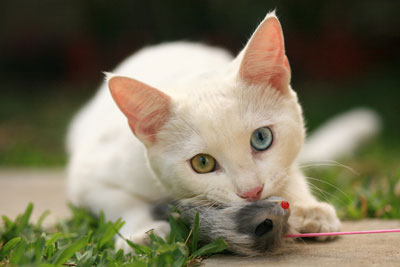Lawns, Toxic Plants, and Outdoor Chemicals
Herbicides (weed killers), insecticides, rodent poison, and slug and snail bait are some of the toxic chemicals used outdoors that may be harmful to your pet. Each summer, insecticides and herbicides poison thousands of pets. When using these chemicals, follow the manufacturer's directions carefully. Make sure that all receptacles and containers are thoroughly washed and out of reach of your pet. Runoff or puddles created from spraying these products should be thoroughly diluted. Do not allow pets in the yard while spraying these products and keep them out of the yard for 3-4 days afterwards. Often, pets walk on surfaces covered with herbicides and become intoxicated after cleaning or licking their paws.


Toxic Plants
Many plants are toxic to pets. These plants must be ingested in order to cause poisoning. Included below is a partial list of common poisonous plants. These plants are listed in alphabetical order. Click on each plant for a photo.
• Azalea
• Braken Fern
• Bleeding Heart
• Boxwood
• Castor Bean
• Crocus
• Crown of Thorns
• Delphinium
• Dutchman's Breeches
• English Holly
• English Ivy
• Foxglove
• Horse Chestnut
• Hyacinth
• Hydrangea
• Iris
• Jack in the Pulpit
• Jerusalem Cherry
• Jimsonweed
• Larkspur
• Lilly-of-the-Valley
• Laurel
• Locust
• Lupine
• Mayapple
• Nightshade
• Oleander
• Poison Ivy
• Red Oak
• Rhododendron
• Star of Bethlehem
• White Snake Root
• Yellow Jasmine
• Yew
Poison oak and poison ivy can cause a skin irritation on your pet. More often though, the problem is when your pet passes it to you. Their fur becomes a source of the poison oak or poison ivy. You develop symptoms after contact with your pet.

